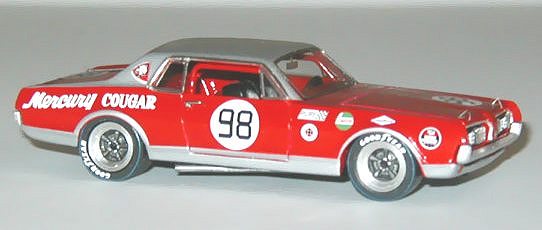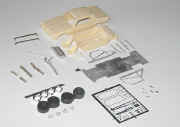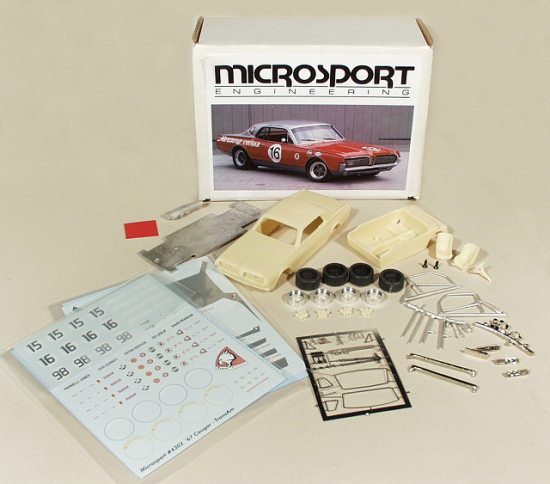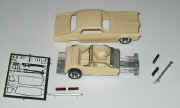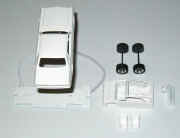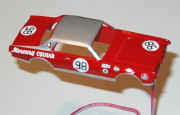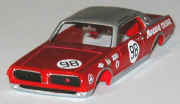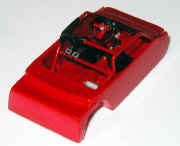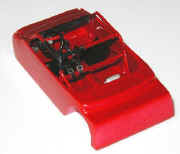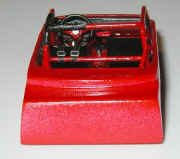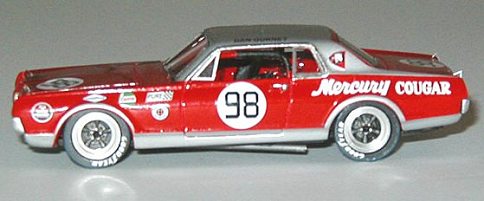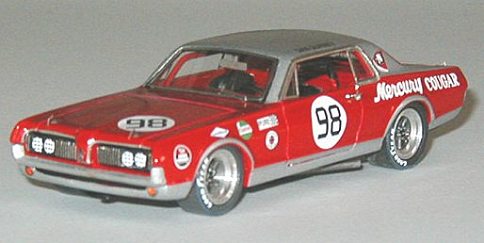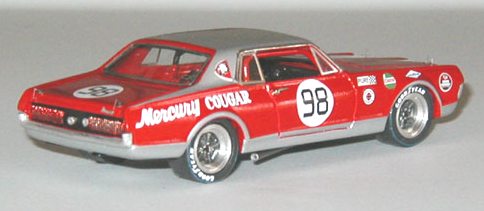|
|||||||||||||
|
The 1967 Cougar, run by the NASCAR Bud Moore team, was involved in a year long battle against the rival Ford Mustang. The car was evolving from one race to the next as the team understood the "rules" of the Trans Am and what it took to go road racing. Dan Gurney's leaking gas cap took him out of running during the last race. Maintenance of the
The kit
There is also a set of chromed parts for the bumpers, front grill and tail lights. The decals are supplied on a couple of sheets. There is a silver set with duplicates for the
Kit preparation Cleaning the parts is quite easy. The castings are very nice. I did make some of the engravings for the body panels a little deeper, but that may not have been necessary.
I read through the instructions before starting, but I thought I would ease myself into the kit by building up the wheel/tire assembly. That way the model could be tested to check ride height and sit. I did dig out a little inside the wheel arches since it was a tight fit. The tires are black resin and the wheel rims are turned parts. If you have built a Marsh Models kit, this is the same thing. A metal insert needs to be painted as per the instructions.
Decals I started by applying the large roof decal to get the hardest one done with. This didn't present any problems. They do react nicely to decal softeners. Next I did the decal under the front bumper so I Assembly This kit doesn't really have any surprises when everything goes together with paint on it. As long as care was taken with the roll cage before painting, this one comes together rather well. It leaves a good impression when finished.
As the body was getting the decals and clear coat, I finished building the interior. I added some black tape around the roll bar and also substituted tape and photo-etched hardware for the seat belt provided. The provided belt is not correct for a 1967 racer. The dash panel got a flat red for the top surface and the photo-etched part had the clear plastic attached and instrument decal added to that.
The exterior first had the grill area in front painted black. I cut a black decal to shape for the opening under the front bumper. It's less stressful and gives a clean edge. I then attached the bumpers, which I painted aluminum since I don't believe they were shiny chrome. The rear lights, assorted body badges, bare metal foil around the front grill and grill parts were then put in place. Later season cars didn't have the chrome around the grill.
Then I went for the windows. There are 2 sheets of clear plastic with paper outlines attached. The outlines can be trusted and will fit well with the photoetched parts. It's a good idea to blacken the recess they sit in for the front and back windows. I would have liked to see the front photo-etched frame be a little wider. The front pillar is a little thick. I decided to add Bare Metal Foil to the rain gutters to reduce the thickness visually.
To finish, I placed the interior inside and screwed in the base plate with the black screws provided. The last parts attached were the hood pins. Conclusion The kit goes together rather well. The assembly process is well thought out and the parts are nicely made. Like many of the Trans Am cars of this era, this car lends itself well to being miniaturized
|
